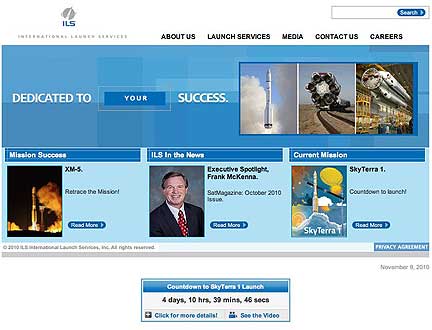
The company’s next-generation satellite system allows users within the United States to use standard handsets or other devices, equipped with the LightSquared chipset, to access the satellite system with high link availability and long battery lifetimes with devices that have the same form-factor and functionality as conventional handsets and devices. Further, the combination of the LightSquared satellite system and the LightSquared 4G terrestrial network provides an unprecedented level of coverage throughout the United States.
The Proton M launch vehicle, utilizing a 5-burn Breeze M mission design, will lift off from Pad 39 at Baikonur Cosmodrome, Kazakhstan, with the SkyTerra 1 satellite on board. The first three stages of the Proton will use a standard ascent profile to place the orbital unit (Breeze M upper stage and the SkyTerra 1 satellite) into a sub-orbital trajectory. From this point in the mission, the Breeze M will perform planned mission maneuvers to advance the orbital unit first to a circular parking orbit, then to an intermediate orbit, followed by a transfer orbit, and finally to a geosynchronous transfer orbit. Separation of the SkyTerra 1 satellite is scheduled to occur approximately 9 hours, 14 minutes after liftoff.

